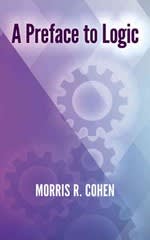Question
In the following data pairs, A represents the cost of living index for housing and B represents the cost of living index for groceries. The
In the following data pairs,Arepresents the cost of living index for housing andBrepresents the cost of living index for groceries. The data are paired by metropolitan areas in the United States. A random sample of 36 metropolitan areas gave the following information.
| A: | 132 | 107 | 128 | 124 | 100 | 96 | 100 | 131 | 97 |
| B: | 125 | 116 | 137 | 104 | 103 | 107 | 109 | 117 | 105 |
| A: | 120 | 115 | 98 | 111 | 93 | 97 | 111 | 110 | 92 |
| B: | 110 | 109 | 105 | 109 | 104 | 102 | 100 | 106 | 103 |
| A: | 85 | 109 | 123 | 115 | 107 | 96 | 108 | 104 | 128 |
| B: | 98 | 102 | 100 | 95 | 93 | 98 | 93 | 90 | 108 |
| A: | 121 | 85 | 91 | 115 | 114 | 86 | 115 | 90 | 113 |
| B: | 102 | 96 | 92 | 108 | 117 | 109 | 107 | 100 | 95 |
Do the data indicate that the U.S. population mean cost of living index for housing is higher than that for groceries in these areas? Use= 0.05. (Letd=AB.)
(a) What is the level of significance? State the null and alternate hypotheses. Will you use a left-tailed, right-tailed, or two-tailed test?
H0:d> 0;H1:d= 0; right-tailed
H0:d= 0;H1:d> 0; right-tailed
H0:d= 0;H1:d0; two-tailed
H0:d= 0;H1:d< 0; left-tailed (b) What sampling distribution will you use? What assumptions are you making?
The standard normal. We assume thatdhas an approximately uniform distribution.
The Student'st. We assume thatdhas an approximately uniform distribution.
The Student'st. We assume thatdhas an approximately normal distribution.
The standard normal. We assume thatdhas an approximately normal distribution.
What is the value of the sample test statistic? (Round your answer to three decimal places.) (c) Find (or estimate) theP-value. P-value > 0.250
0.125 <P-value < 0.250
0.050 <P-value < 0.125
0.025 <P-value < 0.050
0.005 <P-value < 0.025
P-value < 0.005 Sketch the sampling distribution and show the area corresponding to theP-value.
(d) Based on your answers in parts (a) to (c), will you reject or fail to reject the null hypothesis? Are the data statistically significant at level?
At the= 0.05 level, we fail to reject the null hypothesis and conclude the data are not statistically significant.
At the= 0.05 level, we fail to reject the null hypothesis and conclude the data are statistically significant.
At the= 0.05 level, we reject the null hypothesis and conclude the data are statistically significant.
At the= 0.05 level, we reject the null hypothesis and conclude the data are not statistically significant.
(e) State your conclusion in the context of the application.
Fail to reject the null hypothesis, there is sufficient evidence to claim that the mean cost of living index for housing is higher than that for groceries.
Fail to reject the null hypothesis, there is insufficient evidence to claim that the mean cost of living index for housing is higher than that for groceries.
Reject the null hypothesis, there is insufficient evidence to claim that the mean cost of living index for housing is higher than that for groceries.
Reject the null hypothesis, there is sufficient evidence to claim that the mean cost of living index for housing is higher than that for groceries.
Step by Step Solution
There are 3 Steps involved in it
Step: 1

Get Instant Access to Expert-Tailored Solutions
See step-by-step solutions with expert insights and AI powered tools for academic success
Step: 2

Step: 3

Ace Your Homework with AI
Get the answers you need in no time with our AI-driven, step-by-step assistance
Get Started


